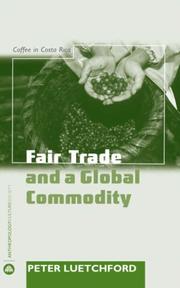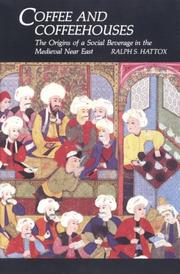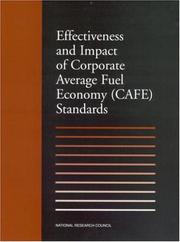| Listing 1 - 10 of 69 | << page >> |
Sort by
|

ISBN: 9780745326986 0745326986 0745326994 9780745326993 1849643725 1783713682 9781849643726 9781783713684 Year: 2008 Publisher: London Ann Arbor, MI Pluto Press
Abstract | Keywords | Export | Availability | Bookmark
 Loading...
Loading...Choose an application
- Reference Manager
- EndNote
- RefWorks (Direct export to RefWorks)
An anthropological account of fair trade farming and the conflicts and contradictions of the movement.
Coffee industry --- Café --- Commerce --- Coffee trade --- Beverage industry --- Café
Periodical
Year: 1951 Publisher: Bangalore : Coffee Board
Abstract | Keywords | Export | Availability | Bookmark
 Loading...
Loading...Choose an application
- Reference Manager
- EndNote
- RefWorks (Direct export to RefWorks)
Coffee industry --- Coffee --- Café --- Commerce --- India.
Book
ISBN: 2903424020 2821830114 Year: 1980 Publisher: Institut de recherches et d’études sur les mondes arabes et musulmans
Abstract | Keywords | Export | Availability | Bookmark
 Loading...
Loading...Choose an application
- Reference Manager
- EndNote
- RefWorks (Direct export to RefWorks)
Health & Biological Sciences --- Diet & Clinical Nutrition --- économie du café --- Marseille --- café

ISBN: 0295962313 9780295805498 0295805498 9780295962313 Year: 1985 Publisher: Seattle
Abstract | Keywords | Export | Availability | Bookmark
 Loading...
Loading...Choose an application
- Reference Manager
- EndNote
- RefWorks (Direct export to RefWorks)
Coffeehouses --- Coffee --- Social history --- History. --- History --- Cafés --- Coffee bars --- Coffee-houses --- Restaurants --- Coffea --- Coffea arabica --- Psychotropic plants --- Rubiaceae --- Seed crops --- Cafés --- Café --- Proche-Orient --- Histoire
Book
ISBN: 9686029656 2821819269 2821827881 Year: 1999 Publisher: México : CEMCA (Centre français d'Etudes mexicaines et centraméricaines),
Abstract | Keywords | Export | Availability | Bookmark
 Loading...
Loading...Choose an application
- Reference Manager
- EndNote
- RefWorks (Direct export to RefWorks)
Se plantea como hipótesis de trabajo que la aceptación de reglas estrictas, los cambios en los hábitos productivos y las aptitudes a la negociación que exige la producción de café solidario, depende en gran parte de la existencia de recursos organizativos en el seno mismo de las sociedades rurales y de sus aptitudes para movilizarlos.
Business & Economics --- Industries --- nichos de mercado --- Max Havelaar --- globalización --- café --- comercio equitativo
Book
ISBN: 1452962448 1517908027 Year: 2019 Publisher: Minneapolis ; London : University of Minnesota Press,
Abstract | Keywords | Export | Availability | Bookmark
 Loading...
Loading...Choose an application
- Reference Manager
- EndNote
- RefWorks (Direct export to RefWorks)
Racism --- Restaurants --- History. --- Cafés --- Dining establishments --- Restaurants, lunch rooms, etc. --- Food service --- Happy hours
Book
ISBN: 0472904094 0472051229 Year: 2010 Publisher: Ann Arbor : University of Michigan Press,
Abstract | Keywords | Export | Availability | Bookmark
 Loading...
Loading...Choose an application
- Reference Manager
- EndNote
- RefWorks (Direct export to RefWorks)
"Out of a small, hand-to-mouth, women's theater collective called the WOW Cafe located on the lower east side of Manhattan, there emerged some of the most important theater troupes and performance artists of the 1980s and 1990s, including the Split Britches Company, the Five Lesbian Brothers, Carmelita Tropicana, Holly Hughes, Lisa Kron, Deb Margolin, Reno, Peggy Shaw, and Lois Weaver. The WOW (Women's One World) Cafe Theatre appeared on the cultural scene at a critical turning point in both the women's movement and feminist theory, putting a witty, hilarious, gender-bending and erotically charged aesthetic on the stage for women in general and lesbians in particular. The storefront that became the WOW Cafe Theatre saw dozens of excitingly original and enormously funny performances created, performed, and turned over at lightning speed--a kind of "hit and run" theater. As the demands on the space increased, the women behind WOW organized as a collective and moved their theater to an abandoned doll factory where it continues to operate today. For three decades the WOW Cafe has nurtured fledgling women writers, designers, and performers who continue to create important performance work. This book provides a critical history of this avant-garde venture whose ongoing "system of anarchy" has been largely responsible for its thirty-year staying power, after dozens of other women's theaters have collapsed. WOW artists were creating a wholly original cultural landscape across which women could represent themselves on their own terms. Parody, cross-dressing, zany comedy, and an unbridled eroticism are hallmarks of WOW's aesthetic, combined--importantly and powerfully--with a presumptive address to the audience as if everyone onstage, in the audience, and in the world is lesbian. The author's research included in-depth interviews with WOW veterans; newspaper reviews of the earliest productions; and rare, unpublished photographs. The book also includes a chronology of productions that have highlighted WOW's performance schedule since the early '80s."--Publisher
Lesbian theater --- Music-halls (Variety-theaters, cabarets, etc.) --- Lesbian theater. --- Theâtre lesbien --- History --- WOW Cafe Theatre (New York, N.Y.) --- New York (State) --- Cabarets --- Café theater --- Concert gardens --- Concert rooms --- Concert saloons --- Variety shows (Theater) --- Variety-theaters --- Theaters --- Vaudeville --- Gay theater --- Women's One World Café Theatre (New York, N.Y.) --- WOW Café Theater (New York, N.Y.) --- WOW --- New York (City)
Book
ISBN: 0252081811 Year: 2009 Publisher: Urbana, [Illinois] : University of Illinois Press,
Abstract | Keywords | Export | Availability | Bookmark
 Loading...
Loading...Choose an application
- Reference Manager
- EndNote
- RefWorks (Direct export to RefWorks)
Impresarios --- Josephson, Barney. --- Café Society (Nightclub) --- Greenwich Village (New York, N.Y.) --- Social life and customs

ISBN: 0309076013 9786610184279 1280184272 0309510678 9780309510677 0309090377 9780309090377 0305076013 9780309076012 0309170567 Year: 2002 Publisher: Washington, D.C. : National Academy Press,
Abstract | Keywords | Export | Availability | Bookmark
 Loading...
Loading...Choose an application
- Reference Manager
- EndNote
- RefWorks (Direct export to RefWorks)
Book
ISBN: 2759230597 2759230600 Year: 2019 Publisher: éditions Quae
Abstract | Keywords | Export | Availability | Bookmark
 Loading...
Loading...Choose an application
- Reference Manager
- EndNote
- RefWorks (Direct export to RefWorks)
Respectueux de l'environnement et garantissant une sécurité alimentaire soutenue par la diversification des productions et des revenus qu'ils procurent, les systèmes agroforestiers apparaissent comme un modèle prometteur d'agriculture durable dans les pays du Sud les plus vulnérables aux changements globaux. Cependant, ces systèmes agroforestiers ne peuvent être optimisés qu'à condition de mieux comprendre et de mieux maîtriser les facteurs de leurs productions. L'ouvrage présente un ensemble de connaissances récentes sur les mécanismes biophysiques et socio-économiques qui sous-tendent le fonctionnement et la dynamique des systèmes agroforestiers. Il concerne, d'une part les systèmes agroforestiers à base de cultures pérennes, telles que cacaoyers et caféiers, de régions tropicales humides en Amérique du Sud, en Afrique de l'Est et du Centre, d'autre part les parcs arborés et arbustifs à base de cultures vivrières, principalement de céréales, de la région semi-aride subsaharienne d'Afrique de l'Ouest. Il synthétise les dernières avancées acquises grâce à plusieurs projets associant le Cirad, l'IRD et leurs partenaires du Sud qui ont été conduits entre 2012 et 2016 dans ces régions. L'ensemble de ces projets s'articulent autour des dynamiques des systèmes agroforestiers et des compromis entre les services de production et les autres services socio-écosystémiques que ces systèmes fournissent.
Tropical agriculture: practice & techniques --- Afrique --- agriculture --- Amérique Latine --- cacao --- café --- développement durable --- développement économique --- économie --- environnement --- forêt
| Listing 1 - 10 of 69 | << page >> |
Sort by
|

 Search
Search Feedback
Feedback About UniCat
About UniCat  Help
Help News
News